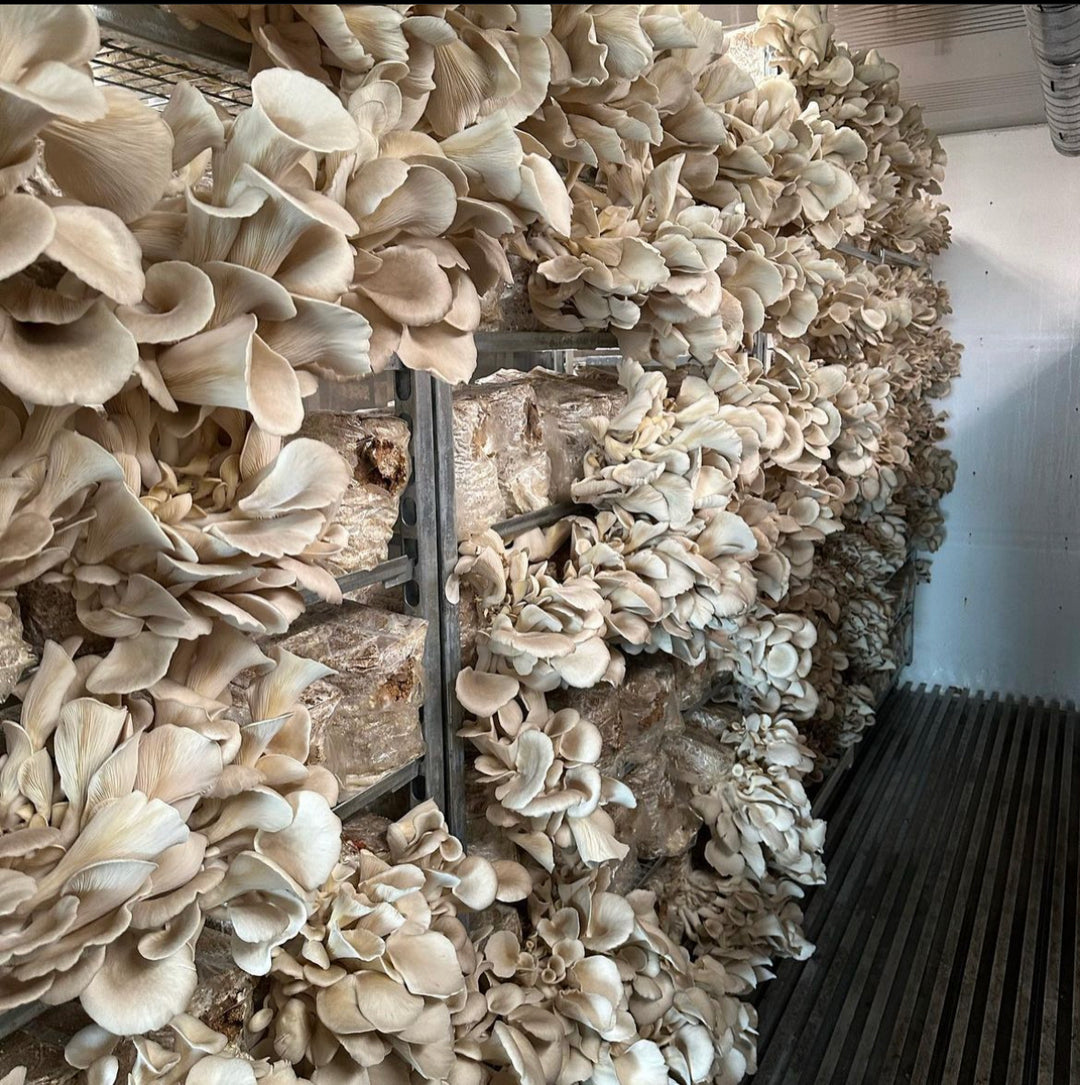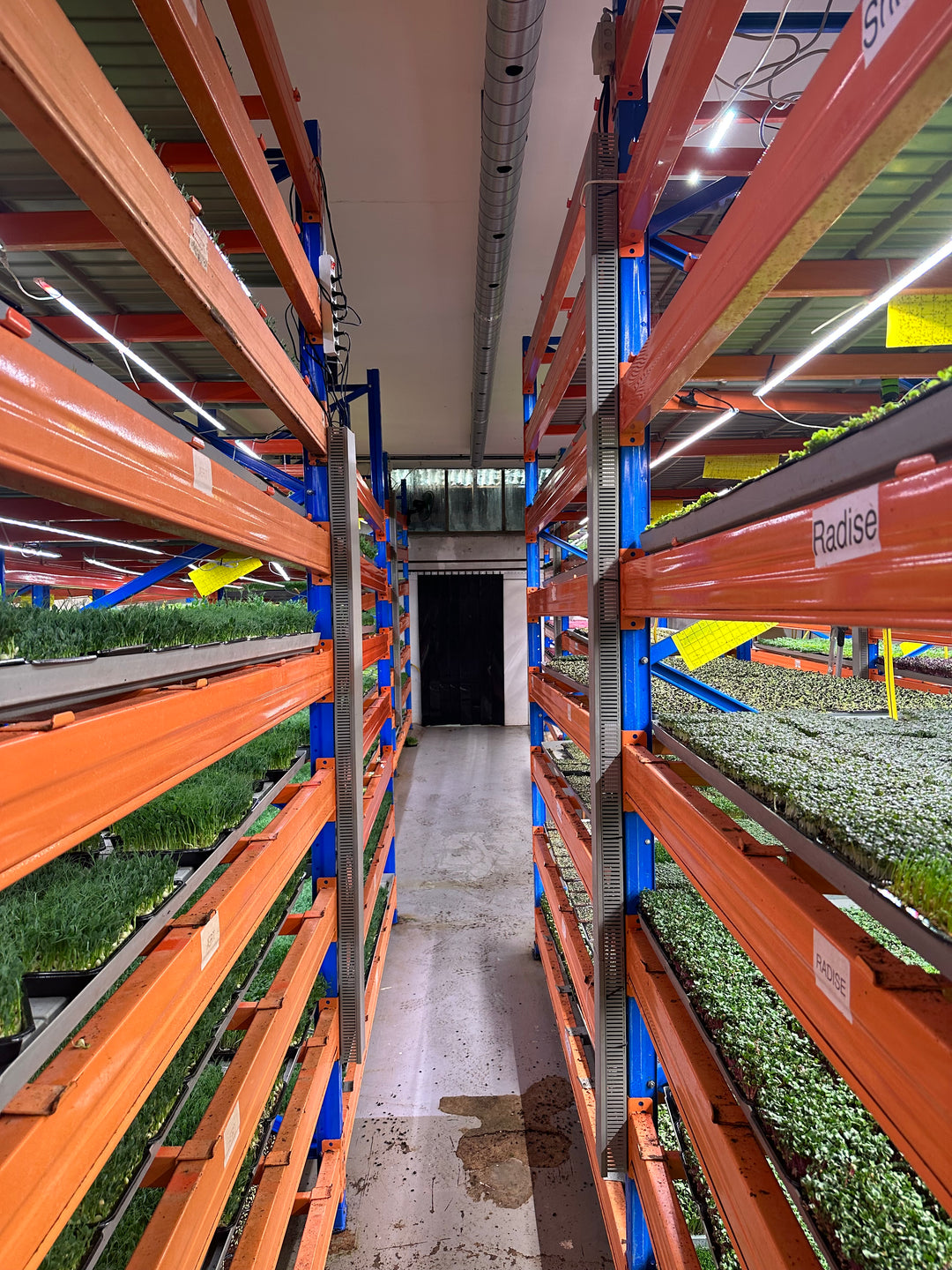Vertical Farming: A Growing Trend Disrupting Traditional Food Supply Chains

The global food system, a sprawling network of farms, processors, distributors, and retailers, has long relied on traditional agricultural practices. However, this established paradigm is facing increasing pressure from a confluence of factors: a surging global population, diminishing arable land, unpredictable climate patterns, and a growing consumer demand for fresh, locally sourced, and sustainably produced food. In response, vertical farming is rapidly emerging as a transformative trend, not only offering solutions to these challenges but also fundamentally disrupting traditional food supply chains.
The Rise of Vertical Farming: A Necessity, Not a Novelty
Vertical farming, the practice of growing crops in vertically stacked layers in controlled indoor environments, has moved from a futuristic concept to a tangible and rapidly expanding industry. Market projections indicate substantial growth, with estimates placing the global vertical farming market size in the tens of billions of dollars by the early 2030s, growing at impressive compound annual growth rates (CAGRs) of nearly 30%. This exponential growth is driven by several compelling forces:
● Population Density and Urbanization: With over half the world's population living in
urban areas and that number projected to rise, demand for food in cities is
skyrocketing. Vertical farms, which can be established within or on the periphery of
urban centers (e.g., in repurposed warehouses, shipping containers, or purpose-built
high-rises), directly address this challenge by bringing food production closer to
consumption.
● Shrinking Arable Land: Decades of agricultural expansion, soil degradation, and
urbanization have led to a decline in available and fertile agricultural land per capita.
Vertical farming drastically reduces land footprint, requiring a fraction of the space of
traditional farms for equivalent yields.
● Climate Change and Water Scarcity: Traditional agriculture is highly vulnerable to
extreme weather events like droughts, floods, and unpredictable temperature swings.
Vertical farms, operating in controlled environments, are immune to these external
factors, ensuring stable, year-round production. Furthermore, advanced hydroponic
and aeroponic systems used in vertical farming can reduce water consumption by
90-95% compared to field farming, a critical advantage in water-stressed regions.
● Consumer Demand for Freshness and Sustainability: Consumers are
increasingly prioritizing fresh, nutritious, and sustainably grown produce. Vertical
farms can deliver crops to consumers within hours of harvest, significantly extending
shelf life and preserving nutrient content. Their minimal pesticide use and reduced
water footprint align perfectly with evolving consumer values.
● Technological Advancements: The continuous evolution of LED lighting,
environmental controls (temperature, humidity, CO2), automation, AI-driven analytics,
and robotics has made vertical farming more efficient, cost-effective, and scalable.
AI, for instance, can precisely manage lighting, nutrients, and climate, leading to
optimized growth, higher yields, and reduced waste.
Disrupting the Traditional Food Supply Chain
The conventional food supply chain for fresh produce is a complex, multi-layered system rife with inefficiencies, vulnerabilities, and environmental burdens. It typically involves:
1. Large-scale Outdoor Farms: Often located far from population centers.
2. Harvesting and Initial Processing: Manual or mechanized, leading to potential
damage and waste.
3. Washing and Packaging: Further processing steps.
4. Long-Haul Transportation: Trucking, shipping, or flying produce across vast
distances, generating significant carbon emissions ("food miles").
5. Distribution Centers: Warehousing and sorting.
6. Wholesale and Retail: Multiple intermediaries before reaching the supermarket
shelf.
7. Consumer Purchase: Weeks after harvest.
This traditional model is prone to several critical issues:
● Extended Lead Times: Food can take days or even weeks to travel from farm to
fork, leading to quality degradation, nutrient loss, and significant food spoilage.
● High Food Waste: A substantial portion of produce is lost or wasted during
transportation, handling, and storage due to spoilage, bruising, or aesthetic
imperfections.
● High Carbon Footprint: "Food miles" contribute heavily to greenhouse gas
emissions.
● Vulnerability to Disruption: Geopolitical events, fuel price fluctuations, natural
disasters, and pandemics can severely disrupt the supply chain, leading to shortages
and price spikes.
● Limited Traceability: Tracking produce from origin to consumer can be challenging,
complicating food safety recalls and transparency efforts.
● Price Volatility: Traditional farming is at the mercy of weather and seasonal yields,
leading to unpredictable supply and fluctuating prices.
Vertical Farming's Transformative Impact:
Vertical farming directly addresses and disrupts these traditional supply chain weaknesses
by:
1. Hyper-Localization and Shortened Supply Chains:
○ Proximity to Consumers: Vertical farms can be established directly within or
very near urban consumption centers, eliminating the need for long-haul
transportation. This radically shortens the "food miles" from thousands to
mere tens or hundreds.
○ Direct-to-Consumer Models: Many vertical farms are exploring direct sales
to consumers, restaurants, and even integrating mini-farms directly into
grocery stores (e.g., Infarm units in Metro supermarkets). This cuts out
multiple intermediaries, simplifying logistics, reducing costs, and increasing
freshness.
2. Enhanced Freshness and Reduced Waste:
○ "Harvest to Table" in Hours: With reduced transit times, produce can be
harvested at peak ripeness and reach consumers within hours, maintaining
optimal freshness, flavor, and nutritional value.
○ Minimized Spoilage: Shorter journeys and controlled post-harvest
environments dramatically reduce waste due to spoilage, bruising, or
contamination during transit.
3. Increased Food Security and Resilience:
○ Predictable Production: Vertical farms offer predictable and consistent
yields year-round, insulating communities from seasonal fluctuations, extreme
weather events, and global supply chain shocks. This builds local food
resilience.
○ Reduced Reliance on Imports: For countries with limited arable land or
challenging climates (like Singapore or the UAE), vertical farming enables a
greater degree of food self-sufficiency, enhancing national food security.
4. Improved Traceability and Food Safety:
○ Closed Systems: The controlled environment of vertical farms inherently
reduces exposure to external contaminants.
○ Data-Driven Tracking: Advanced monitoring systems and digital platforms
allow for precise tracking of crops from seed to harvest, enabling robust
traceability and rapid response in case of any issues.
5. Market Diversification and Premium Products:
○ While traditionally focused on leafy greens and herbs due to their rapid
growth cycles and high value, vertical farms are increasingly diversifying into
berries, specialty vegetables, and even exploring staple crops.
○ The consistent quality, freshness, and pesticide-free nature of vertically
farmed produce allow it to command a premium in the market, catering to a
discerning consumer base.
Challenges to Overcome
Despite its transformative potential, vertical farming faces hurdles:
● High Initial Investment: Setting up sophisticated vertical farms requires substantial
upfront capital for infrastructure, lighting, HVAC, and automation.
● Energy Consumption: While becoming more efficient, the energy demands for
artificial lighting and environmental control remain a significant operational cost and
sustainability concern, necessitating a shift towards renewable energy sources.
● Limited Crop Variety (Historically): While expanding, not all crops are currently
economically viable or suitable for vertical farming systems (e.g., root vegetables or
large fruit trees).
● Scalability for Staple Crops: Producing staple crops like wheat or corn in vertical
farms at a scale competitive with traditional agriculture is still a significant challenge.
Conclusion
Vertical farming is more than just a passing trend; it is a fundamental shift in how we
envision and execute food production. By drastically shortening supply chains, enhancing
freshness, bolstering food security, and minimizing environmental impact, it offers a
compelling alternative and complement to traditional agriculture. As technological
advancements continue to drive down costs and improve efficiency, vertical farming is
poised to play an increasingly vital role in creating a more resilient, localized, and
sustainable global food system, fundamentally reshaping the journey from farm to fork.


